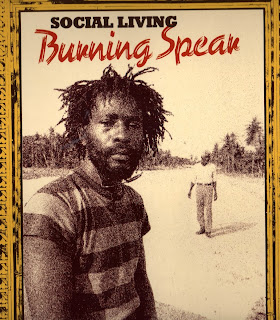Sarah Kendzior's article quotes Patti Smith's advice to young would-be artists and musicians thinking of coming to New York City to kick off their careers. The advice - quite simply - is, "Don't!" She and another ageing musician of punkish origins, David Byrne, make the obvious point that cities like New York and London have become "unliveable" to all but the richest one percent. Everyone else is there on sufferance to serve the needs of the super-rich, and then to fuck off back to their miserable ordinary little lives in the outer suburbs.
We've had strong versions of these arguments many times before - recently with that last UB40 generation in the early 1980s, that end-of-the-dole-queue poet era, when you could live in a Brixton squat one week and the next be presenting some new Channel 4 arts prog.
In those days, there were still cheap bits of London that penniless arty-types could flee to. Once Camden and Notting Hill became too pricey, they moved East sand colonised Hackney, SHoreditch, Bethnal Green and Bow.
And now that these areas have themselves become plums in proerty developer portfolio, so the struggling arts types shift to south-east London, Peckham for example, or north-east out to Hackney Wick and Walthamstow.
We've also had the "Occupy" protests in London and other cities.
We've had strong versions of these arguments many times before - recently with that last UB40 generation in the early 1980s, that end-of-the-dole-queue poet era, when you could live in a Brixton squat one week and the next be presenting some new Channel 4 arts prog.
In those days, there were still cheap bits of London that penniless arty-types could flee to. Once Camden and Notting Hill became too pricey, they moved East sand colonised Hackney, SHoreditch, Bethnal Green and Bow.
And now that these areas have themselves become plums in proerty developer portfolio, so the struggling arts types shift to south-east London, Peckham for example, or north-east out to Hackney Wick and Walthamstow.
We've also had the "Occupy" protests in London and other cities.
But Ms Kendzior's piece goes well beyond these anger-fuelled attacks on the new rich and the bankers, the property-billionaires. She digs deeper into the meaning of creativity, and why cities - which once were fertile breeding grounds for artistic movements - are fast becoming the reverse of this.
In NYC there's a company, Sitters Studio, which hires out artists to work as sort of cultural nannies to the children of the most affluent - "This is the New York artist today: A literal servant to corporate elites, hired to impart "creativity" to children whose bank accounts outstrip their own."
The vile reality is that "creativity" in the plutocratic circles of these world cities is encouraged, or at least tolerated, if it can be seen as a useful commodity, one that might help their kids make even more money in business or the professions. They love creativity when it is applied to accounting and tax bills.
But when it comes to taking risks, or to attacking the values on which the moneyed depend, their attitude to "creatives" can change very quickly. All this media talk about "edgy" fashion and movies and music, well it only goes so far. They love "edgy" when it makes them look smarter and sexier than their peers, but only when does not threaten their wealth.
But when it comes to taking risks, or to attacking the values on which the moneyed depend, their attitude to "creatives" can change very quickly. All this media talk about "edgy" fashion and movies and music, well it only goes so far. They love "edgy" when it makes them look smarter and sexier than their peers, but only when does not threaten their wealth.
But if - as say in the case of a Hirst dot painting or an Emin bed - edgy can earn them handsome profits at auction, then bring it on!
























